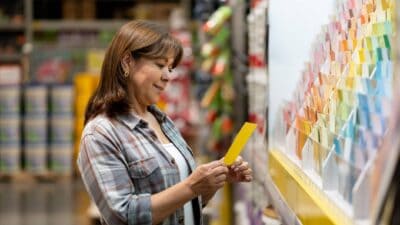Lovisa Holdings Ltd (ASX: LOV) shares are among the newest additions to the S&P/ASX 200 Index (ASX: XJO) today.
For me, Lovisa has been an ASX share that got away. And it could very well continue to do so.
After tumbling to $3.31 in the depths of the COVID crash, Lovisa shares have catapulted 580% to currently sit at $22.51 each.
It's also one of the few ASX 200 shares sitting comfortably in the green this year. Despite concerns of soaring inflation and rising interest rates, the Lovisa share price has raced 14% higher since the start of the year.
It's left other ASX 200 shares in the dust, with the broader market printing an 11% fall across the same period.
As Lovisa shares continue to soar to new heights, here are a couple of reasons why I like this ASX 200 retail share.
Terrific economics
Lovisa has great business economics, which are made all the more impressive given the industry it operates in.
Retailing is traditionally a low-margin industry, but Lovisa's vertically-integrated business model and small store footprint spin up superb margins.
In terms of vertical integration, Lovisa develops, designs, sources, and manufactures all of its products in-house.
This allows the company to quickly respond to changing consumer trends and double down on what's working. But perhaps even more impressively for investors, it gives the company cost advantages that underpin juicy gross margins.
In FY22, Lovisa boasted gross margins of 79%, enough to even make some ASX 200 tech shares envious. In other words, for every pair of $10 earrings flying off the shelves, it paid suppliers on average just $2.10.
Another beauty of Lovisa is its small store footprint. Being a fast-fashion jewellery retailer, it doesn't need much space to display, nor stock, its products. Plus, its stores are relatively inexpensive and easy to fit out.
Once up and running, these stores are highly productive, ushering in customers in high-foot-traffic areas looking to indulge on a budget.
As a result, new stores become profitable very quickly, typically paying for themselves within a year.
This helps Lovisa to flaunt strong operating margins, which sat at 18% in FY22.
A global growth story
Lovisa opened its very first store in Chermside, Queensland in 2010. Within a few months, it expanded into New Zealand. And the following year, it entered the South African market.
Fast forward a decade or so and Lovisa is truly a global force, with a store network spanning nearly 20 countries across the globe.
Prior to COVID, around half of Lovisa's revenue came from its local Australian and New Zealand markets.
A few years on, international revenue made up 62% of Lovisa's sales in FY22, growing 118% from the prior year.
Underpinning this growth were 85 net new stores opened during the year, all in international markets but particularly the US. This takes the company's current total to 629 stores, a number that is only set to continue heading north.
Given the terrific economics we discussed above, it makes sense for Lovisa to be expanding its store network at pace.
It doesn't always get it right, exiting the Spanish market in 2020, but management has shown its prowess to date.
The savviness of management was on full display when it swooped on a very opportunistic deal during COVID.
Amid the chaos, Lovisa bought 84 store locations from European jewellery and accessories distributor Beeline. The company then converted these stores to its own format and brand, suddenly commanding a significant presence in Europe in one fell swoop.
The acquisition came with nearly €10 million and no debt aside from lease liabilities.
All this for a grand purchase price of… €60. Yes, just 60 euros! Plus, Lovisa also received the option to acquire Beeline's 30 stores in France for an extra €10, which it later went through with.
Beeline was motivated to keep its workforce employed, so Lovisa inherited the staff of these stores along with the leases.
Lovisa share price snapshot
In my eyes, Lovisa is a high-quality ASX retail share with an impressive track record and a healthy pipeline for growth in new and existing markets.
What's more, against a backdrop of rising interest rates and inflation, Lovisa's younger customer base and low price point could see it being more resilient than other ASX retail shares in a downturn.
The market reacted positively to Lovisa's FY22 results, bidding up the company's shares by almost 20% in the last month.
Lovisa currently commands a market capitalisation of roughly $2.5 billion.
And after doubling its net profit after tax (NPAT) to $58.4 million, Lovisa shares are trading on a trailing price-to-earnings (P/E) ratio of around 42 times.








